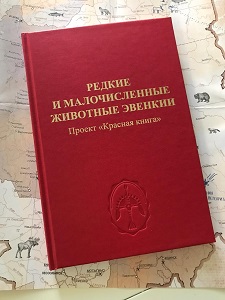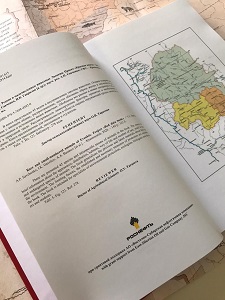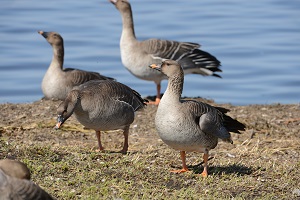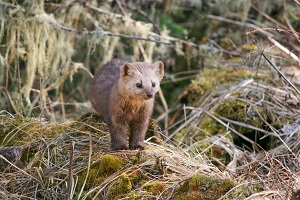Unique Red Book of Evenkia Published with the Support of Vostsibneftegaz

The unique Red Book of Evenkia was published as part of the grant programme of the East Siberian Oil and Gas Company, a part of the Rosneft oil production complex. It presents 45 rare and small animals living in this region.
Rosneft pays great attention to environmental protection during its production activities. A list of species that are indicative of the sustainable state of Arctic ecosystems was compiled, and a set of data on the appearance of various animal species in Rosneft’s licence areas was analysed under large-scale Biodiversity Conservation Programme.  Particular attention was paid to rare and protected species, including those listed in the Red Book of the Russian Federation, regional Red Books, and the Red List of the International Union for Conservation of Nature.
Particular attention was paid to rare and protected species, including those listed in the Red Book of the Russian Federation, regional Red Books, and the Red List of the International Union for Conservation of Nature.
Specialists of the Biodiversity Monitoring Centre of the Siberian Federal University helped to collect and structure the information obtained in the course of many years of research, as well as to conduct a comprehensive analysis of the Evenkia ecosystem. This resulted in obtaining unique data on the wildlife of Evenkia, which formed the basis of the publication.
The textbook contains brief information on rare, small and endangered species, their appearance, habitats and numbers. It is intended for environmentalists, ecologists and biologists as well as for teachers, schoolchildren and students.
 The unique natural complex of Evenkia is the subject of research by many Russian and foreign environmental scientists.
The unique natural complex of Evenkia is the subject of research by many Russian and foreign environmental scientists.
World Wildlife Fund experts have included the area in the list of especially valuable natural areas due to the presence of places not affected by human activities. The biological resources of the area are diverse and rich, as 240 bird species, 43 mammals and 25 fish species live here. Most of them belong to particularly valuable species.
 With one in five species on the planet on the verge of extinction, keeping the Red Book is an important part of environmental protection measures, including the fragile ecosystems of northern territories.
With one in five species on the planet on the verge of extinction, keeping the Red Book is an important part of environmental protection measures, including the fragile ecosystems of northern territories.
Siberian scientists are sure that only joint efforts of the authorities, business, and local population aimed at preservation of the unique ecosystem will enable us to pass on to future generations the natural heritage of severe lands of Siberia.
Note for Editors:
The East Siberian Oil and Gas Company, a subsidiary of Rosneft Oil Company, develops the Yurubcheno-Tokhomskoye oil and condensate field in the Evenki district of Krasnoyarsk Territory.
Supporting the culture and traditional way of life of the indigenous people of Evenkia is one of the key lines of the social work of the company. During the years of the work in the region, Vostsibneftegaz has implemented a lot of social, charitable and grant programmes.
The Vostsibneftegaz grant scheme has been in operation for six years. Within the period, the company has supported 18 scientific projects such as the Siberian Federal University’s project to study the population of wild reindeer and lesser white-fronted goose listed in Red Book; Central Siberian reserve on the research of a population of the Siberian sable, research institute of the ecology of fishery reservoirs on working out of biotechnics of artificial reproduction of the Siberian taimen. The Sukachev Institute of Forest of the Siberian Branch of Russian Academy of Sciences conducted studies of microbiological characteristics of soils of post-fire successions in forest cryogenic ecosystems in Middle Siberia, the Trade and Economics Institute of the Siberian Federal University developed scientific and practical justification for the production of bread for the northerners from Jerusalem artichoke, a perennial herbaceous tuber plant.
The implementation of the grant schemes helps save the unique natural environment, national culture, and traditional way of life and cultural authenticity of indigenous population of Evenkia.
Rosneft
Information
Division
May 7, 2020